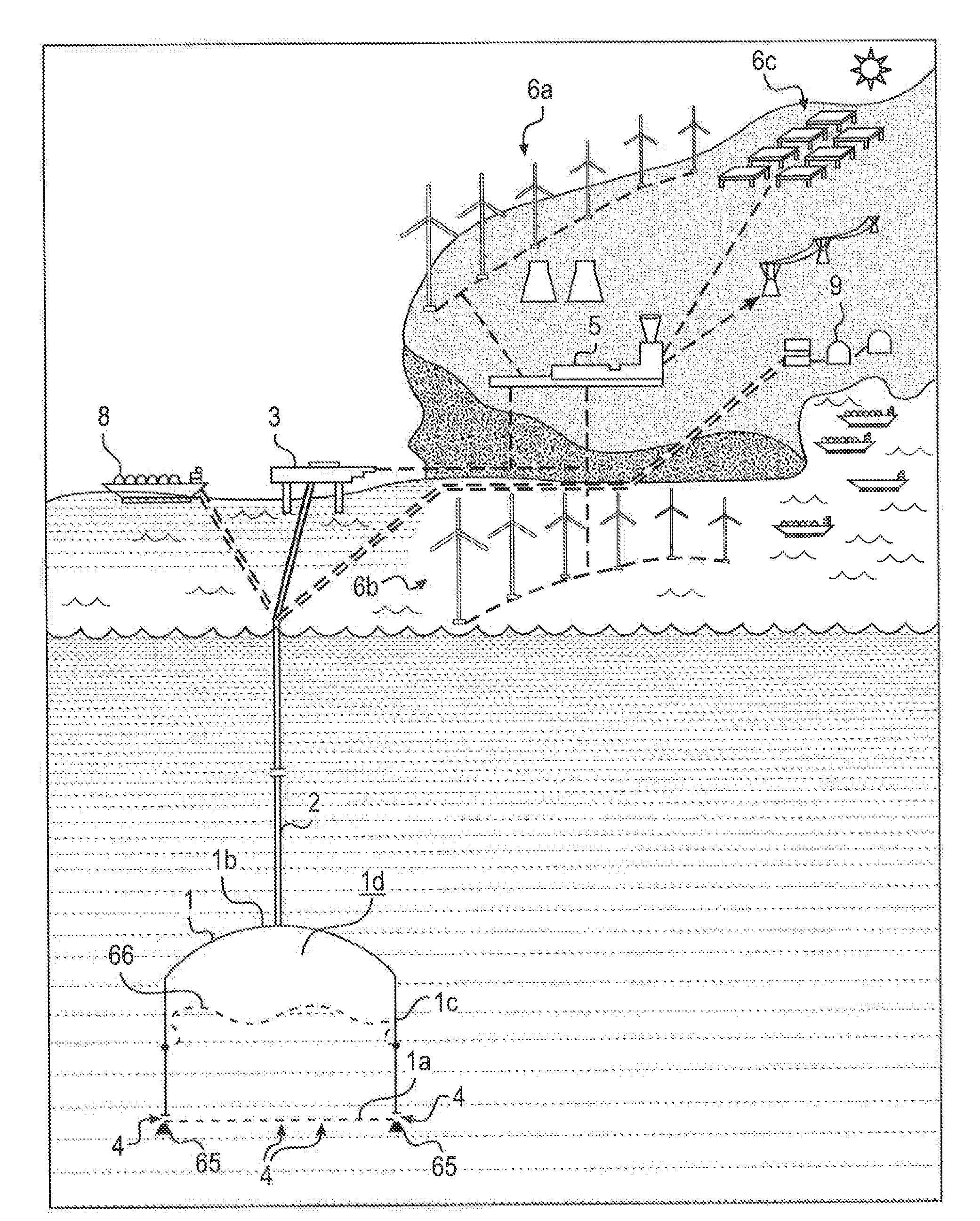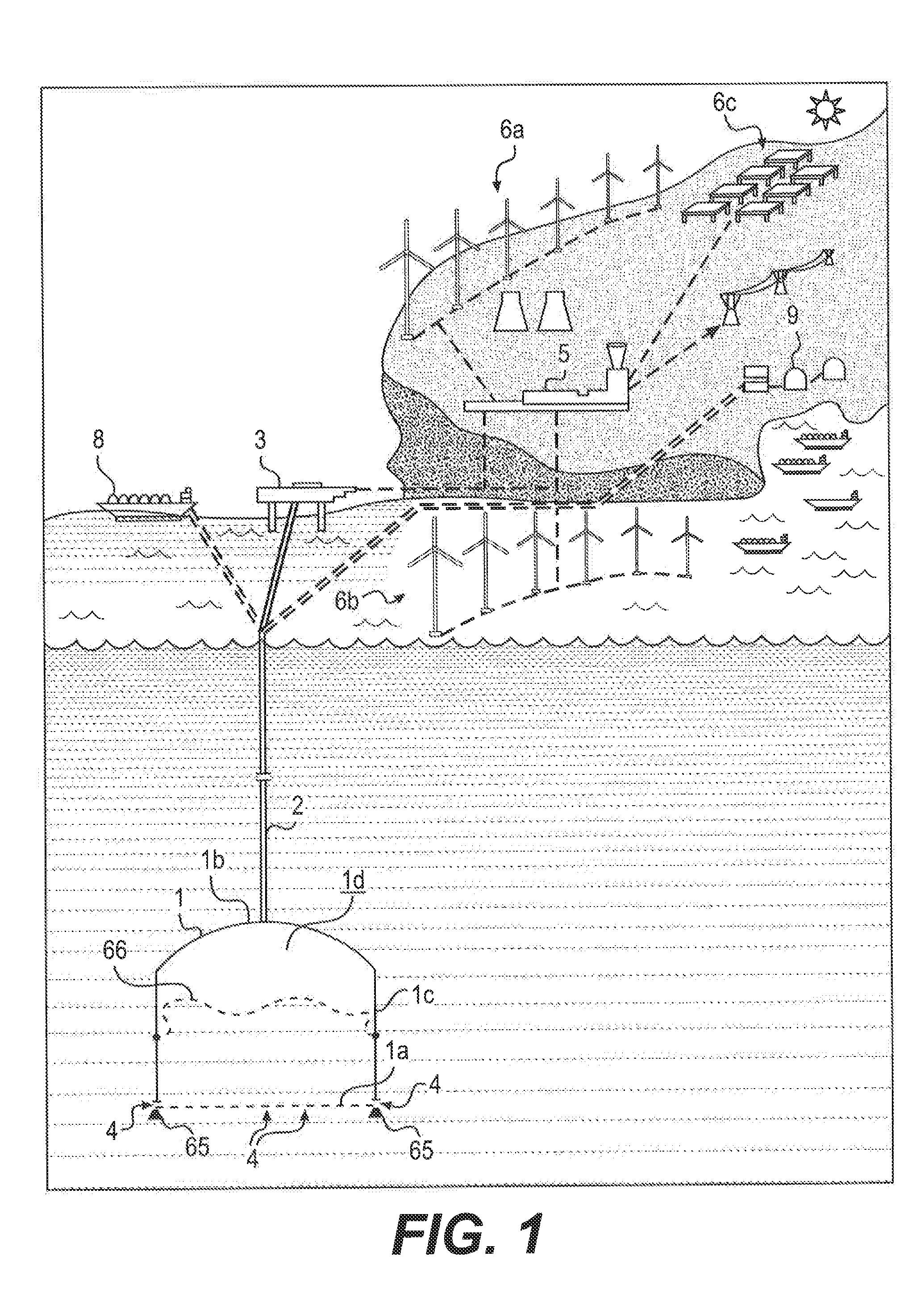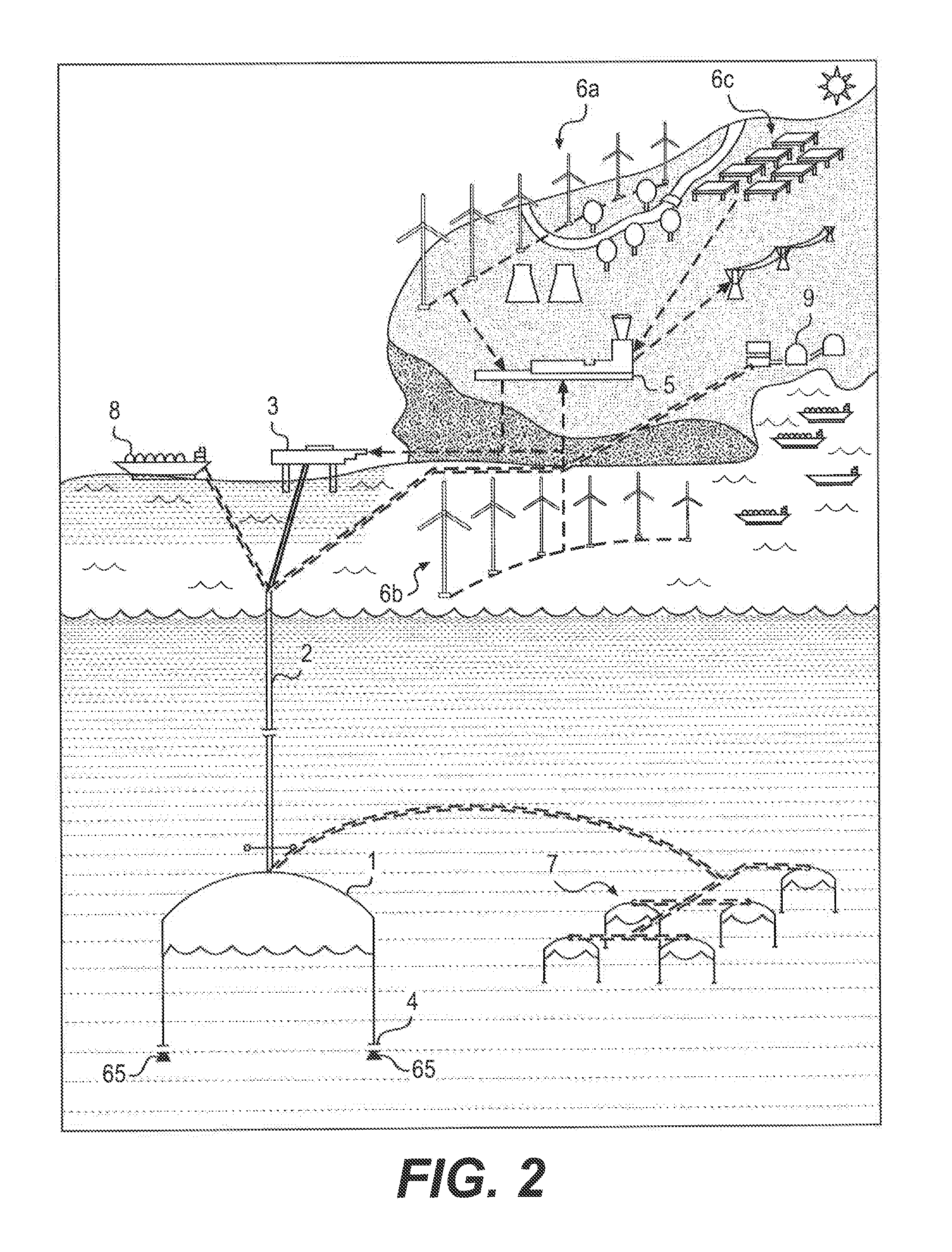Active volume energy level large scale sub-sea energy fluids storage methods and apparatus for power generation and integration of renewable energy sources
a technology of energy fluids and active volume, which is applied in the field of energy storage systems and methods, can solve the problems of increasing world energy consumption at an alarming rate, difficult to harvest useful energy from these sources in a steady way, and sources are not predictable, so as to achieve optimized energy balance, low cost, and high pressure
- Summary
- Abstract
- Description
- Claims
- Application Information
AI Technical Summary
Benefits of technology
Problems solved by technology
Method used
Image
Examples
Embodiment Construction
[0040]Since the natural gas being considered is less harmful to environment than liquid fossil fuels, the gas storage systems installations gained substantial momentum around the world, especially over the last 20 years. Despite increased activities in gas storage, mainly two important issues among the many others are extremely critical for the advancement of this sector. These issues are safety and the size of storage volume. However, a negative is that these two factors are inversely related. Storing a large mass of gas requires either a high compression pressure or low pressure but large storage volume. As mentioned above, these two factors are also inversely related from a safety point of view. Thus, land based fixed volume storage technology has limited capacity and has many problems including costly construction, especially large tanks at high pressures. The present invention provides a solution to the land-based gas storage problem by exploiting the high ambient pressure exis...
PUM
 Login to View More
Login to View More Abstract
Description
Claims
Application Information
 Login to View More
Login to View More - R&D
- Intellectual Property
- Life Sciences
- Materials
- Tech Scout
- Unparalleled Data Quality
- Higher Quality Content
- 60% Fewer Hallucinations
Browse by: Latest US Patents, China's latest patents, Technical Efficacy Thesaurus, Application Domain, Technology Topic, Popular Technical Reports.
© 2025 PatSnap. All rights reserved.Legal|Privacy policy|Modern Slavery Act Transparency Statement|Sitemap|About US| Contact US: help@patsnap.com



